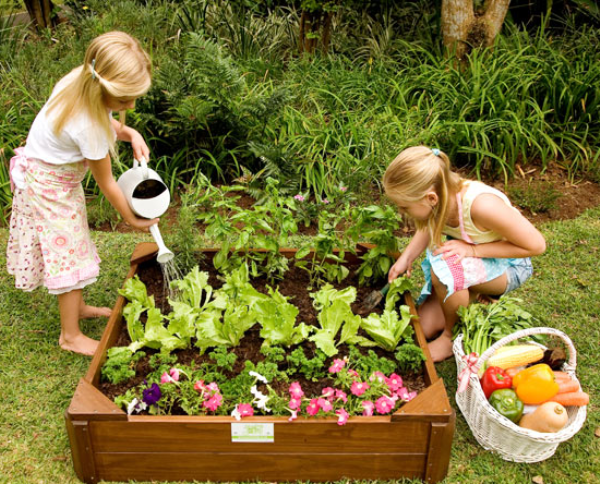Vegetables are parts of plants that are consumed by humans or other animals as food. Many of us enjoy adding to our meals the homegrown herbs, garden fresh tomatoes, and crispy salad greens, but mostly we are limited in what we can grow ourselves. Thankfully, even the most urban yards and outside area from the house have the potential for producing relatively high yields.
Here are some helpful tricks that can help you cultivate out of the most of your garden, large or small.
–
Choose High-yield Crops
Some vegetables produce more food in a given space than others. This varies by location, depending on your soil, available sunlight, and climate. Create a plan for your garden that takes the characteristics and preferences of crops into account.
In general, pea plants and radishes are great veggies to plant in the early spring before much else will grow. Other plants can go in their spot in the garden after the harvest, and pea plants even help fix nitrogen in the soil for your next crop.
Peppers are relatively small plants that grow up instead of out. Although they take up a decent amount of space, tomatoes can produce massive yields. Pole beans and cucumbers don’t take up that much space if they grow up trellises. Tomatoes, peppers, and greens are especially well suited for container gardens on patios or balconies.
Kale and Swiss chard will produce greens for months and allow you to harvest them numerous times throughout the growing season.
Spinach, lettuce, arugula, and baby greens can be planted in small spaces or even as an edge on garden beds.
–
Succession Planting
The timing of crops is essential to getting the best harvest. In most areas, gardeners can stagger plantings to get yields of various crops in the same spot at different times. This method, called succession planting, is a great way to make efficient use of space but requires gardeners to pay close attention to what, where, and when they plant.
When a plant is no longer productive, remove it and plant something else that thrives during that part of the growing season. Some seeds will thrive in cold soils, such as spinach, radishes, arugula, peas, green onions, and broccoli. Other plants, such as tomatoes, cucumbers, basil, peppers, eggplant, edamame, and squash, like warmer weather.
–
Staggered Planting
Plants tend to yield the most at a certain point and then decline. If you space out the planting by two or four weeks, you will sustain a smaller harvest for a longer period of time. This is a good approach if you do not want to preserve the harvest and want to eat as much as possible while it is fresh. Brocolli, carrots, tomatoes, green beans, lettuce, cabbage, onions, and radishes all work well with staggered plantings.
–
Enrich the Soil
Soil fertility is essential for thriving, healthy veggies. If something is off with your soil quality, it is essential to discover and remedy this.
A number of different soil amendments increase nutrient content, including compost, manure, leaf mulch, seaweed, fish emulsion, bone meal, and feather meal. Adding organic matter also helps soil hold moisture. Place mulch on top of the soil to add nutrients slowly as it breaks down, suppress weeds, and lock in moisture.
Whenever possible, avoid synthetic pesticides that hinder microbes and leave chemicals in the soil. When in doubt, send in a soil sample for testing to determine if nutrients are lacking, or the soil pH is outside of the ideal range.
–
Minimize Wasted Space
To get more crops in a smaller space, pay attention to how you arrange them. Instead of planting in rows, try organizing plants in triangles to maximize yields. Keep in mind that plant spacing is a balancing act though. Overcrowded plants won’t get as big, so this is counterproductive to high crop yield. If you noticed that you have overplanted, remove some of the less vigorous looking plants. Paths can take up a lot of space, so raised beds are a popular way to maximize yields in small spaces.
–
Choose Crops, Varieties, and Seeds Carefully
Not all veggie seeds are created equal. Some veggies may not prosper in your yard due to climate, soil, and available sunlight. Okra, for example, thrives in high heat and humidity but will barely produce a harvest in colder climates.
If you are just getting started gardening or are new to the area, ask local veteran gardeners about what crops have been most successful for them.
Look for garden seeds that were produced in your region for better germination and yields. Faster maturing plant varieties will produce crops more quickly, which helps assist in succession-planting strategies. Heirloom seed varieties that were developed in your area might be especially well suited for your local climate.
–
Read more about VEGETABLE GARDENING FOR BEGINNERS


One thought on “How To Grow Lots of Vegetables in Small Places| 5 Ways to grow quickly”